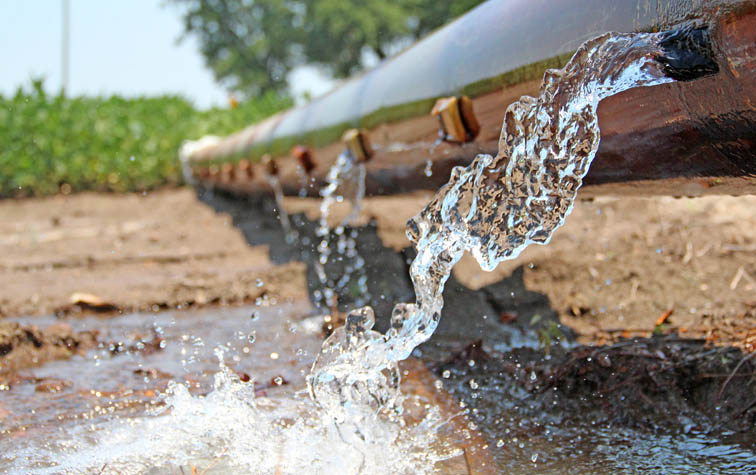June 12, 2013

The old cliché that says “timing is everything” is especially true when growing soybeans in northeast Louisiana.
Josh Lofton, an LSU AgCenter researcher at the Macon Ridge Research Station near Winnsboro, has begun a study funded by the Louisiana Soybean and Grain Research and Promotion Board to determine the best schedule for irrigating soybeans.
The goal of the study is to see whether having irrigation begin at either the late-vegetative, flowering or pod-development stage affects yield as water is applied for longer periods of time.
“Another consideration that’s just as important as when to start irrigating is when the grower should stop irrigating,” said Lofton. “Some growers have as much of a problem terminating water.”
Growers typically end irrigation when the pods are completely filled out and soil moisture is available.
“For some growers, when the pods are about half-filled and soil moisture is available, they will irrigate once more just to help push that soybean all the way to the end of the season.”
When and how much to irrigate are expensive decisions because growers have to have energy to pump water and sometimes soil nutrients are lost which are costly to replace.
“So it can really get expensive, and he needs to know that each irrigation event will have a positive impact on his yields.”
The research is being conducted at plots at the Northeast Research Station in St. Joseph as well as at Macon Ridge.
Northeast Louisiana is known for its heavy clay or “gumbo” soils compared to the lighter, sandy soils at Macon Ridge and many other areas of Louisiana. This is important when looking at water-holding capacity.
“Up here in the northeast, our growers are highly irrigated because of the heavy soils in the area.”
Many growers have routinely started their irrigation about the time the pods are forming and the bloom stage is complete. The problem with this schedule is the possibility of yield loss because timing is late as the plant has already set pods.
“When we go from flower to pod, the plant typically requires more water than Mother Nature normally gives us. So a lot of our growers are increasingly dependent on irrigation.
“Our current recommendation for starting irrigation is when we go from flower to pod.”
Lofton and Ronnie Levy, the AgCenter’s soybean specialist, have demonstrated that this is really too late to start managing irrigation.
“We determined that growers are already losing yield if they are experiencing drought conditions during the flowering stage.”
At that point, the plant’s genetic material has already determined how many pods it will have, how big those pods will be and if the plant will fill out those pods.
“We’re thinking that even though it does not take up a whole lot of water, if we get those drought-stressed conditions in early-flowering or even potentially in late vegetative stage when we don’t even have a flower on the plant, we potentially are already losing soybean yield,” Lofton said.
You May Also Like




